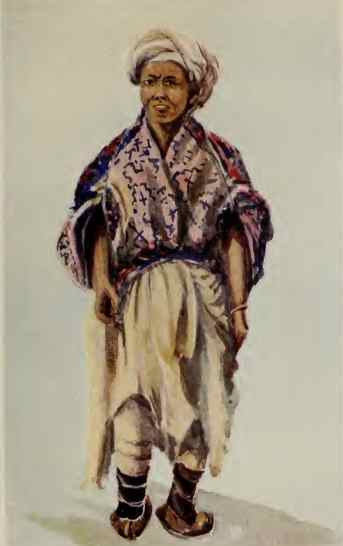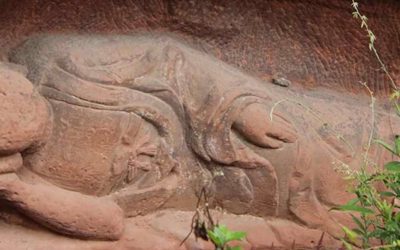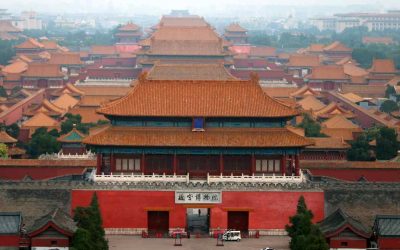The Flowery Miao in Zhaotong
As depicted by E. G. KEMP in The Face of China. New York. 1909.
- The prefectural town of Zhaotong was reached after passing through a dull plain, across which a piercing wind was blowing, which is characteristic of this district. It is an interesting little place, and is much frequented by many of the Miao (aboriginal tribes) in their picturesque dress. The Hua Miaos (flowery Miao) are so called because of the colour of their dress, which is dyed blue and red by an ingenious method of stencilling the cloth, using beeswax to make the design. They are totally unlike the Chinese, the only point of similarity being the wearing of the pigtail by the men; but they have a religion and language of their own, and keep absolutely aloof from the Chinese.
Miao women
The women, when married, wear their hair erected into a horn, which sticks out from the side of the head; but as soon as they have children the horn is erected straight up from the top. They are very shy people, but as I was anxious to get a sketch of a woman, I got the missionary to persuade her to sing while I made a few notes. She was dressed in a pretty red and blue garment, with a large felt cape over it, and wore a full short petticoat of blue and white.
Both men and women wear gaiters and loose leather boots, and the men’s sleeves are looped up in a picturesque way as in the accompanying sketch. The women carry their babies slung on their backs.
Other tribes
- We were very sorry that lack of time prevented our making an excursion into the neighbouring district, which is inhabited by aboriginal tribes. The Wesleyan missionaries have been civilising some of these people, and one of their number has successfully reduced the Miao language to writing by an ingenious adaptation of Pitman’s shorthand system. The tribesmen are able to read and write in a few weeks, and have taken to writing letters to one another like ducks to water. There are [210] many different tribes among the mountains, some very- shy and unapproachable, and with curious customs of their own.

A race of the Manzas
A member of the mission described to us a curious race that takes place in Bábú land where the Manzas live, but which had never been visited before by European women. The course is strewn with the feathers of fowls, and the men wear very full, short, circular dark capes, and a sort of crest on their heads. Then they put their ponies at full gallop, and extend their arms so that they look like eagles with extended wings as they sweep round the course ventre a terre enveloped in a cloud of feathers and dust. Some of the tribes are very wild ; not infrequently the Lolos or Ibien, as they prefer to be called, kidnap the Chinese and make them pay a heavy ransom, so that little towers of refuge are built in this district.
The number of these aboriginal tribes is probably unknown to any one; we always heard conflicting accounts of them, and until recently no systematic attempt has been made to approach them. Hosie describes how difficult it was even to catch a glimpse of any of them when they were close beside the road, as they lurk in the bushes to try and see others, themselves unseen.
Last posts
Buddhist Immersion from Shanghai: No Need to Board a Plane—Paradise Is Right at Your Doorstep
Buddhist Immersion from Shanghai: No Need to Board a Plane—Paradise Is Right at Your Doorstep Residents of Shanghai eager to learn more about Buddhist art and history often think they must undertake long journeys to reach the sacred mountains of this religion. What...
The Lost Mythology of Ancient China
The Lost Mythology of Ancient China Reconstructing the mythology of ancient China is a painstaking task that tries to characterize some legendary figures and situations based only on the few sentences about them found in later works by philosophers and historians. The...
How a Eunuch Was Created in 19th-Century China
How a Eunuch Was Created in 19th-Century China A wealthy eunuch would purchase a boy from a poor family. This boy had to be between seven and ten years old. He would be kept confined for two weeks and subjected to a very strict diet; he ate little. Use of...







